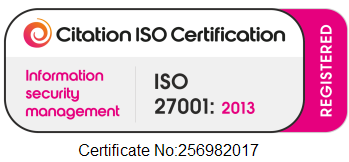The recruitment industry was already seeing a shift in its processes, but with the outbreak of coronavirus, that shift has only excelled.
So now as we look to the future, what does it have install for talent attraction professionals?
Emerging Roles
With new technology becoming more widely adopted, the more the demand there is for roles in AI and data security. Teams now find themselves taking on these new forms of technology to stay competitive. The World Economic Forum already predicts the creation of 133 million jobs by 2022, and talent attraction teams need to fill them. As we’ve seen in the last few months, job seekers and recruiters alike have had to get creative. Adapting and learning new skills and utilising new channels, a need that will only increase. With a particular focus on where we spend most of our digital time and the new ways, we like to digest content. But, what will prove difficult for recruiters is the skill shortage for these roles. And therefore, more will need to be invested in training and development.
Understanding the Gen-Z Candidate
The Gen Z candidates that are entering the market come with new knowledge. Knowledge which attraction teams will have to learn to understand. Not only this but, as we said, the way we digest material will continue to change, so long application processes are no longer suitable. The generation Z candidates like to apply for roles in a tap and a swipe. There is also the need of understanding the greater importance of offering a positive candidate experience, as not only does word of mouth carry strong value so, does the statements about employers via reviews sites, Indeed and Glassdoor. This seek for social proof means that organisations need to be even more cautious of their presence.
Adapting to a New Purpose
Thanks to technology, talent attraction teams are beginning to find a different purpose. With the likes of AI-powered chat boxes and Applicant Tracking Systems, recruiters find themselves no longer tasked with mundane administrative jobs. This allows more time and focus on human interaction. Providing us with the ability to achieve better candidate experiences with a more hands-on approach. And as automation increases, candidates will only be more grateful for this level of attention, to guide them through the journey. This white-glove treatment shows the commitment to engage and support candidates to succeed. Important, as with a skill-shortage, comes a more competitive market. So, it will be interesting to see how the candidate experience improves as from what we have seen it was on the decline and only when attraction teams begin to take on this new role will it improve.
Technology
The use of video technology has surged during this pandemic, allowing us to connect but on a remote basis. Both candidates and recruiters have quickly adapted to these new tools, welcoming them and importing them into their future processes, saving time and money for all parties. But they are already becoming more technological, as AI-powered tech begins to analyse candidates by scanning for facial cues. Algorithms can now track, analyse, and assess the candidate’s facial expressions and tone of voice to eliminate human bias. Applications are now beginning to become voice-assisted. AR (Augmented Reality) and VR (Virtual Reality) advancements are being used to give workspace tours. And with AI can be used across the entire journey — from attracting, hiring, retaining, and developing talent, technology certainly has a lot to offer talent attraction teams.
Sign up to our newsletter!
Recruitive offer End to End Recruitment Solutions and Services from ATS Software, Cloud Based Recruitment Software, Onboarding Software, Media Purchasing & the Design of Careers Websites.




Comments are closed